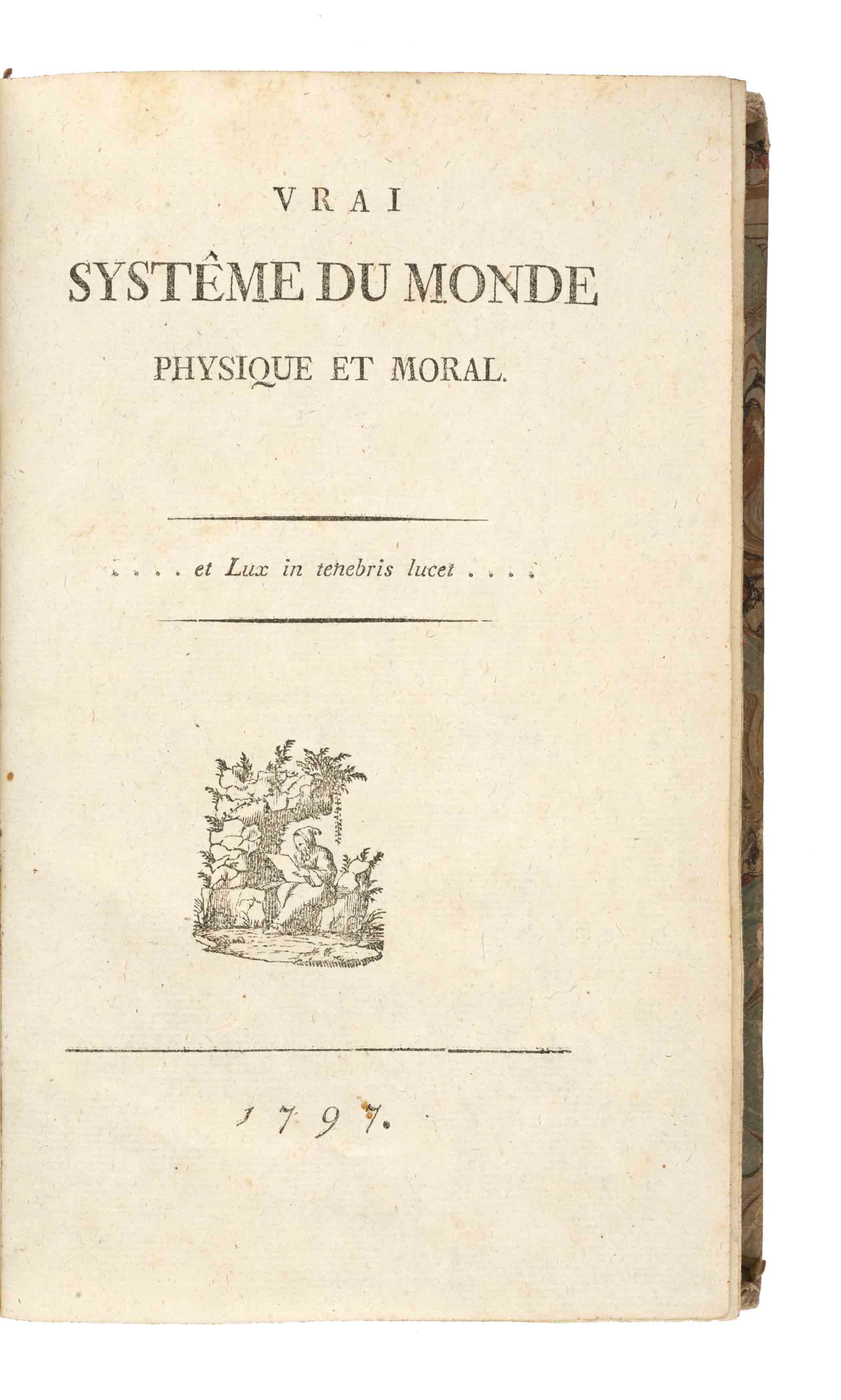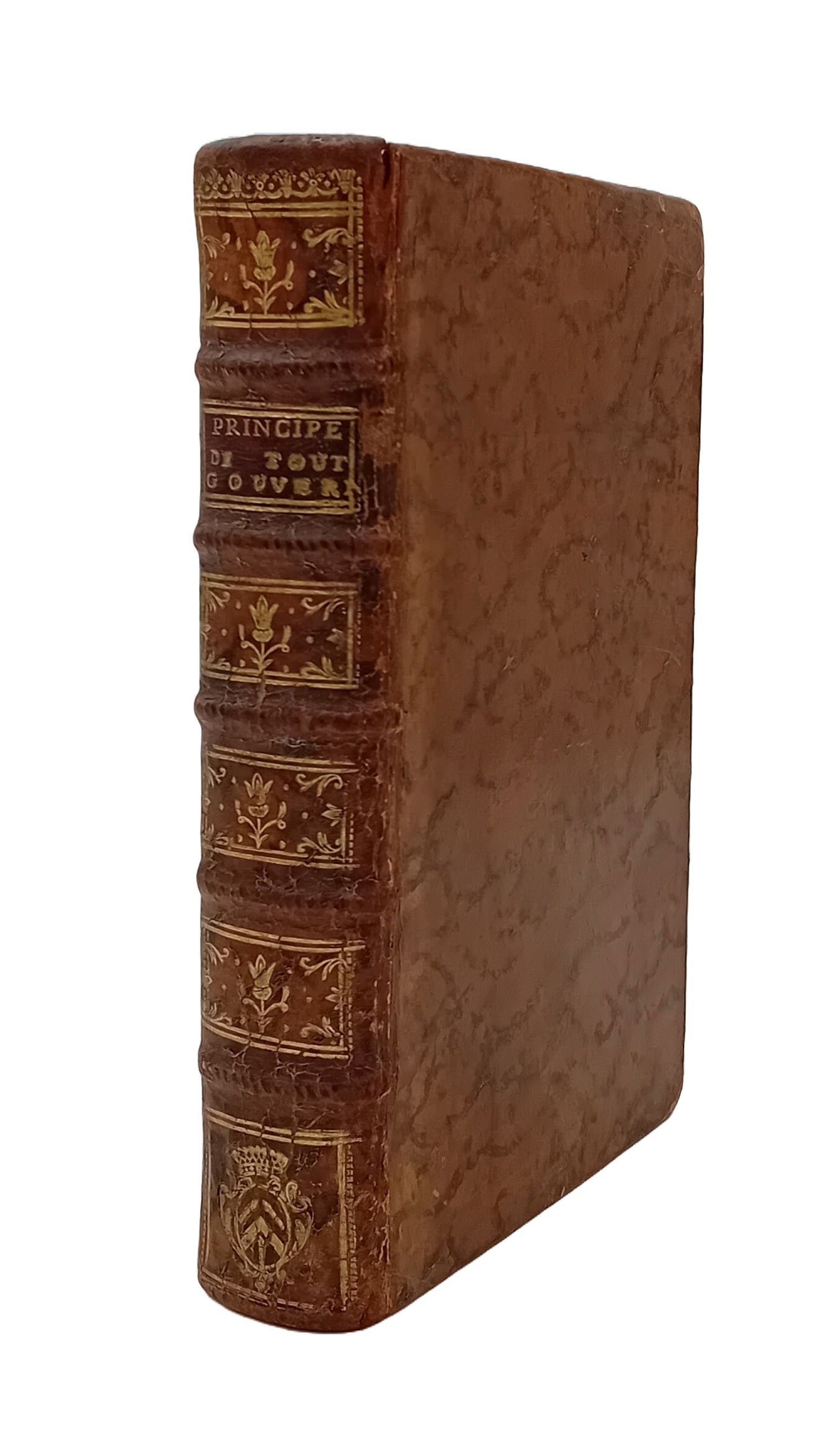WALRAS SENIOR’S SEMINAL SCHEME
WALRAS, Auguste.
Théorie de la richesse sociale ou résumé des principes fondamentaux de l’économie politique.
Paris, Guillaumin et C.ie, 1849.
[bound after:]
PROUDHON, P[ierre]-J[oseph]. Théorie de l’impot … question mise au concours par le conseil d’état du canton du vaud en 1860. Paris, E. Dentu, 1861.
[and:]
RICARD, Émile. Théorie de l’impot. Marseille, A. Gravière, 1859.
12mo, pp. [4], 100; 126, [2]; 103, [3]; half-titles; very good copies in contemporary red quarter roan and marbled boards; two ink postage stamps and author’s inscription addressed to Émile de Girardin on the half-title of the Ricard, further (fainter) stamps within the same text.
Added to your basket:
Théorie de la richesse sociale ou résumé des principes fondamentaux de l’économie politique.
Three first editions, including the first appearance of the work which strongly influenced Léon Walras: his father Auguste’s Theory of social wealth.
Auguste Walras, father of Léon, studied at the Ecole Normale in Paris where he met and worked with Augustin Cournot under the tuition of Victor Cousin. Although initially a student of philosophy and literature, Walras felt an attraction to political economy. He developed his own general schemata of economics as a science. The Théorie de la Richesse is important for the influence it had on Léon; it is from this work that he derived his conceptual arrangement of capitaux as ‘all ‘goods’ that serve more often than once and, in a narrower sense, as durable goods that are themselves produced (capitaux proprement dits). Their services he called revenus, no matter whether they are consumed by the owner (e.g. as leisure in the case of ‘personal’ capital: this leisure is still travail) or used productively’ (Schumpeter, p. 999). ‘Auguste Walras’ interest in and contribution to economic theory were prompted mainly by his quest for a valid theory of property. After a critical analysis of the current theories of value, he singled out scarcity as the only significant cause of value. He concluded that land was scarce in a very special sense and, hence, should belong not to
single individuals but to society as a whole. This is not, however, incompatible with private ownership of non-land capital. His famous son, Leon Walras, not only adopted this theory but also proved the feasibility of a laissez-faire type of economy in which land is nationalized. His debt to his father is also evident in his analysis of general economic equilibrium in which he makes use of valuable economic ideas and tools devised or inspired by Auguste Walras’ (R. Cirillo, The Influence of Auguste Walras on Léon Walras, in ‘The American Journal of Economics and Sociology’ vol. 40, No. 3 (Jul., 1981), p. 309).
The idea of common ownership can be found in Proudhon’s mutualist essay and Ricard’s earlier work of the same title. The Ricard dedicatee Émile de Girardin (1802–1881) was a journalist and publisher of penny presses, the most successful of his era, who in his political views veered between liberal socialism and reactionary opinions, very much in the fashion described by Ricard.
Walras: Cossa 272 (83); Einaudi 5974. Proudhon: Einaudi 4576. All three works are scarce; OCLC and COPAC list five copies of the Proudhon; the Ricard is not on COPAC, and OCLC lists only four copies; OCLC and COPAC list two copies of the Walras in Dutch libraries and five in the UK.

